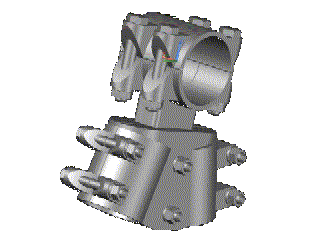









Note: 3D graphics powered by the jsc3d project under the terms of the MIT license.

George received his B.S. in Electrical Engineering with a Power System Emphasis from the University of Tennessee in 1973. While attending college he enrolled in the Cooperative Engineering program with the Jackson Utility Division, Jackson, TN. As a student, he participated in his first major substation design and construction project, a 46:12kV, 50mVA substation. One of his major tasks was on-
He received his M.S. in Engineering Administration from the University of Tennessee in 1983. The curriculum included advanced courses in power system engineering.
In 1983, while managing the Nashville, TN, office of the engineering firm Allen & Hoshall, Inc., he stumbled on a new software product out of California called AutoCAD. Quickly realizing the potential of this product, he ordered the free demo. AutoCad V1.2 arrived on a single 360kB, 5¼ inch floppy disk complete with a manual consisting of a black 3-
In the late 80s, as a result of a design change to a 60mVA substation, he developed his first 3D model. This verified that a potential conflict existed in the design and the problem was resolved. He went on to model the entire substation in 3D which was used to determine the height of the decorative, and expensive, fence required to screen the substation. However, it was evident that 3D had an immense potential in substation design.
The major drawback to AutoCAD 3D at that time was the inability to generate elevations from the 3D plan view. The final piece of the 3D puzzle was put in place when Autodesk introduced the SectionPlane command in AutoCAD 2007. With this command, the required section views could finally be automatically generated from the 3D plan view. 3D design had come of age.
George is a Registered Professional Engineer in four states, including his home state of Tennessee, a member of the National Society of Professinal Engineers and a Lifetime Senior Member of IEEE. He has spent his career in the Electric Utility industry in Planning, Transmission and Distribution line design and Substation design. He has designed twelve Distribution Substations, four Primary Substations, one high voltage switching station and numerous substation modifications and upgrades.
In 2014, after 43 years in the industry, he retired with his two best friends, Dusty and Sally Mae, to Knoxville, TN, where he devotes his time to travel, ancestry research and continued development of the 3DToolBox. For the full resume, click here.


George Flew, P.E.